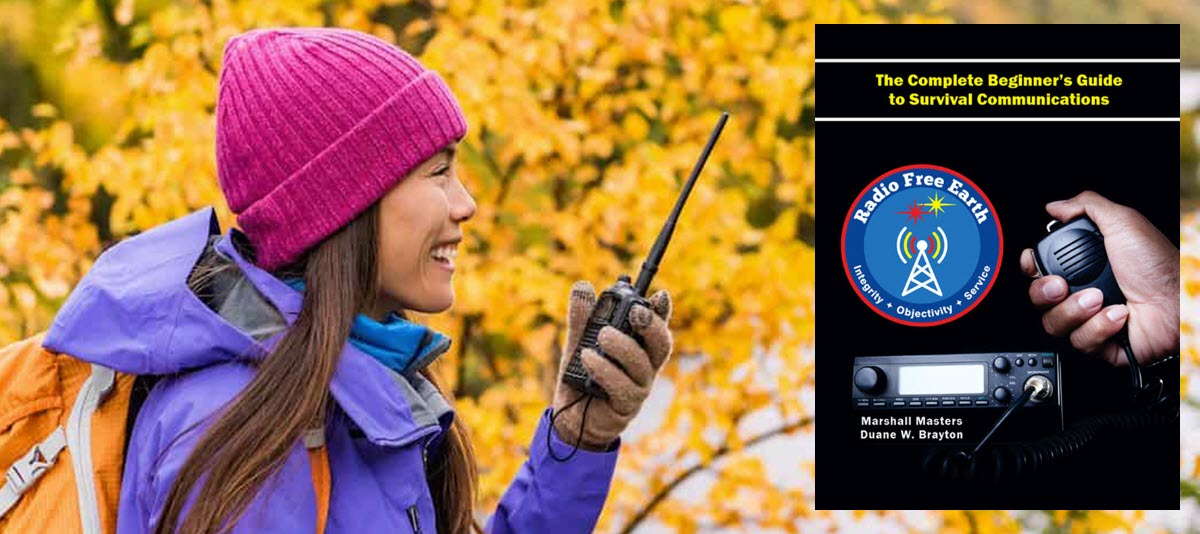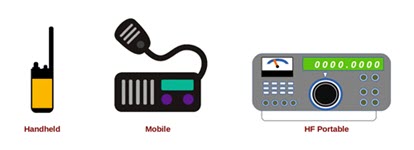Two-way radios for survival need to be affordable, widely available, reliable, and easy to use for all family members, young and old.
There are many types of two-way radios, and most are used by the military, governments, businesses, amateur hobbyists, and preppers. These groups are willing to invest tremendous amounts of time, money, and effort in shaping communications plans that suit their needs, and vast resources are available. But what about newbies on a tight budget?
What makes Radio Free Earth by Marshall Masters and Duane W. Brayton different is that it is written expressly for those new to two-way radios with simple explanations that fast-track the learning process to help them choose affordable two-way radios for survival.
The goal is to focus on the survival communication needs of men and women of all ages who wish to get on the air as quickly and efficiently as possible without needless tinkering and tweaking and the heartache and costs of trial-and-error mistakes.
This website offers everything a beginner needs to create a successful survival communications plan. It answers the frequently asked questions of those just starting out in a way that makes it as easy as 1-2-3.
Step 1 – Getting Started
One can find a confusing myriad of two-way radios, so knowing what to focus on and the related FCC licensing issues is essential. We suggest you begin with the following:
FCC Licenses
Licensing is where most people like to be, and this page will give you confidence and peace of mind. It explains the FCC licensing requirements for the most popular survival two-way radio categories. GO
Post-Disaster Communications Videos
This video series will give you a simplified, high-level overview of how two-way radios of several types are used for survival so you can narrow your focus on what you need. Learn which radios are good for near and far. GO
Step 2 – Planning Your First Radio Purchase
The most frustrating thing for beginners is buying their first two-way radio only to learn it was not their best first choice. The purpose of this website and our book, Radio Free Earth, is to help you do it right the first time, and we suggest you begin with the following:
Citizens Band Radios for Survival Videos
Citizens Band Single Sideband (SSB CB) radios are the ideal first radios and an easy win. They are affordable, easy to use, and a great way to prepare for more complex amateur HAM radios. Watch these videos and you’ll know why. GO
Digital Radios vs. Analog Radios
Analog amateur HAM radios are robust with powerful features and can do many things, and digital radios are the new trend, but they are expensive and complicated. Before considering digital radios, read this page. GO
Step 3 – Getting on the Air
Getting on the air can be daunting as you learn the jargon and how it works. Before getting on the air, it’s best to listen to others on the air until you get the hang of it, whether you need an FCC license or not.
Ham Cram
In days past, getting an FCC HAM license for amateur radios was laborious. It would take weeks, if not months, to prepare for the exam, plus you had to master Morse code. Getting your FCC is much easier today—no Morse code, and you can prepare for the exam in hours. Read our Ham Cram page to learn how easy it has become. GO
Buy Radio Free Earth
There are excellent resources for purchasing two-way radios and gear, including Ham Radio Outlet, Amazon, and eBay, to name a few. The question then becomes, how can you buy smartly for your needs and get a good deal? Our book Radio Free Earth will show you what to look for and save you time and money, more than the book’s price. GO







